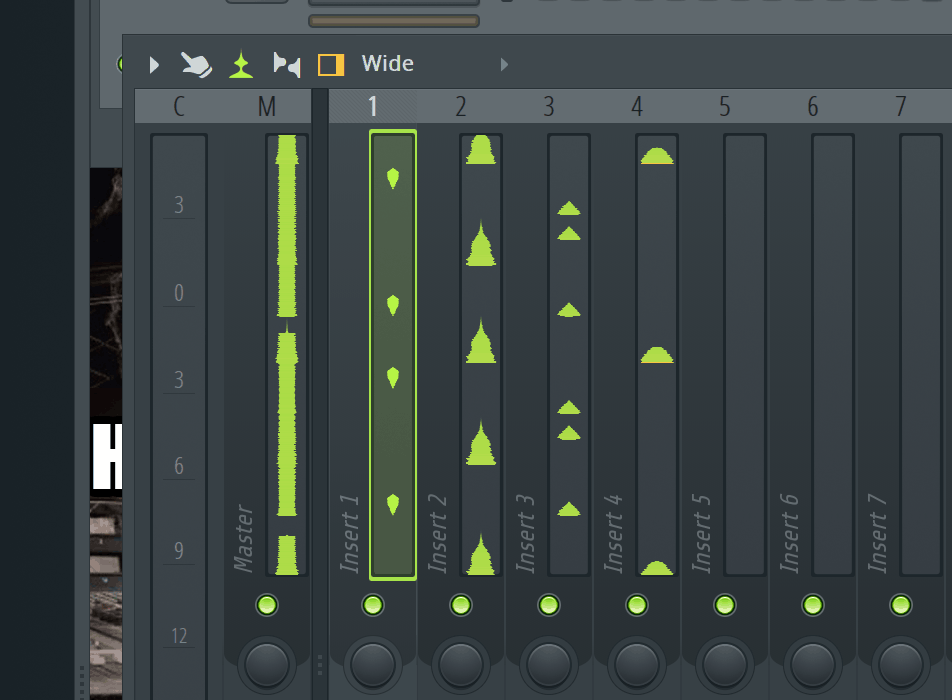Producing a track is hard. But you know what’s harder? Writing a song.
That’s right – something with vocals and/or a catchy melody.
Whether you’re a producer looking to up their game by adding your own vocals, or you’re a beginner songwriter just starting out, this article will help you.
We’ll cover:
- 5 tips for successful songwriting
- How to integrate songwriting, arrangement and production
- Examples of great songs and why they work
Let’s go! 👇
Streamline your workflow with our Free Chord Progression Cheat Sheet.
Get our one-page guide containing all the essentials you need to write catchy chord progressions.
Writing Tunes vs. Writing Songs
You want to know what makes a good song?
First, let’s look at what a song actually is.
Everybody throws around the term ‘song’ these days, but the actual definition of a song might not be known to them.
A song technically ‘requires’ a vocal for it to be called a song.
Otherwise, it’s just music. Or a track.
Many musicians and producers get into music but not everyone is used to singing, or at least working with vocalists. So for many of you, this might be new terrirory.
As a producer, I know that I tend to avoid working with vocals, whether it’s my own or someone else’s simply because it’s new territory.
But don’t fear – this article is here to help.
Now that we’ve got that cleared up, onto the tips.
Tip 1: Make Your Melody ‘Singable’
This might sound obvious to you, but trust me, this exercise makes a big difference.
Many songwriters and producers rely on the use of a keyboard, piano or guitar for coming up with chords and melodies. And that’s fine – it’s a fantastic way to generate musical ideas.
But want a sure-fire way to write something catchy?
Hum it.
Play a chord progression and just mumble melodic gibberish until something comes out.
You don’t even have to have lyrics – in fact, I think this exercise is far more enjoyable when you just let yourself go and see where the inspiration takes you.
Consider a song like Lean On by Major Lazer, DJ Snake and MØ:
That vocal melody is extremely ‘singable’ for the average listener – and it’s very easy to hum or whistle.
Even the vocal chop section is like that.
As a musician, this might be a bit uncomfortable at first (don’t overthink it, and maybe close your door so nobody has to listen ?) but it’s well worth trying.
If you’ve got your DAW open, perhaps record a couple of takes and see which ones are sticking.
Bonus Tip: If you’re a rapper or MC, you can do this same exercise with rhythm and tonality. Hum/mumble a phrase to get a vibe for it and then replace it with lyrics later.
Tip 2: Leave Space for Your Vocal
I’m super guilty of this, but it’s a truth time and time again.
Don’t stuff your tunes with too many layers before writing a vocal.
Unless the vocal and lyrics aren’t the focal point of the track, then you’ll want to write the track around the vocal, not the other way around.

If you don’t, you’ll end up playing a game of ‘puzzle arrangement’, which involves moving your musical ideas around the spectrum in order to fit the vocal in. And it almost always guarantees sub-par results.
If you are going to build a ‘musical framework’ for your vocal before writing it, I’d recommend writing no more than the following:
- A basic drum pattern
- One variation of a chord progression
- A simple bass line
- Minor background FX for atmosphere (optional)
Apart from that, I really don’t believe you need much else to make a good song foundation, and even all that isn’t necessary if you want to start with the vocal earlier.
And as for the chord progressions and bassline, put them in a range that your voice or the vocalists voice won’t conflict with.
For male voices, you might have to carve out some lower mids, whereas standard mid-range is more traditional for a female singer.
A great example of this is ‘The Veldt’ by deadmau5 and Chris James:
The chords and bass take up the lower part of the spectrum, with the vocal front and centre in the high-mids, with a few FX and arps dancing around it.
In the sections that feature no vocal, you have beautiful strings that can shine through and fill up the spectrum, but when the vocal comes back in the strings disappear and it becomes front and centre again.
Simple yet effective.
Tip 3: Keep Things Interesting Yet Repetitive
Repetition is super key for any catchy/memorable vocal, or melody in general.
But if you’re writing pop or pop-oriented music, then you’ll want to keep things moving along.
Not only for the vocal, but the arrangement in general.
You can use interesting techniques like ‘call and response‘, as well as ‘variations on a theme‘.
Perhaps you can double your phrase length from 4 to 8 bars, or 8 to 16 bars – this allows more space for subtle changes over time.
Another great technique is to alternate between an A and a B section.
You have two similar ideas that offer enough change to make the song interesting but coherent.
To use a great example in electronic music, consider ‘Cola’ by CamelPhat and Elderbrook:
The track progresses with the catchy vocal repeating the same line, and eventually switches to the acapella-type vocal hook in the build to the drop.
In terms of the drums, they are consistently developing and adding new layers as the track builds.
Then you have that percussive pluck that comes in playing a syncopated rhythm, adding interest to the arrangement.
The elements are simple, but the interchanging and subtle development makes it interesting.
This is also why the verse/chorus structure works so well in so many songs – the verse acts as a similar precursor to the chorus, which is the ‘memorable’ part of a song.
P.S. another great example of this is Madeon’s Imperium, which we have broken down previously.
Tip 4: The Verse/Chorus Structure Works For a Reason
They strike the right balance between repetition and interest. They keep the listener on their toes without losing their place in the song. They help you get out of the loop trap.
That’s why you’ll find so much pop music uses this exact structure for so many songs – you’re alternating between two sections with enough similarity and difference, without distracting the listener.
A bridge towards the end of the song is also not uncommon to give the listener a ‘magic moment’, which is a fancy way of saying a ‘one-off’ occurrence in a song.
These can be powerful, because a good bridge can help ease the listener into the song even more, and help it be one of those tunes that they can’t get off repeat.
‘You Were Right’ by RÜFÜS DU SOL is a great example of the traditional structure in an EDM context:
You can hear a chorus intro at the start, going straight into a verse on the line ‘Under the water…’.
Shortly after, it goes into the chorus again with ‘You were right…’ and has the drop.
After this, it has verse 2, another chorus, and a bridge-like section with a repeating ‘you were right’.
Classic but effective.
Tip 5: Write From The Heart
None of the above tips will work unless you’re writing songs that actually mean something – to you and your listeners.
I think it’s important to balance writing lyrics, chords and melodies that you love and ones that resonate with your fans.
This requires intentionality behind the writing process, and means you’ll have to avoid clichés even if they are tempting or trendy.
Most songs that stand the test of the time don’t just rehash the same lyrical ideas over and over – they usually do something a little different at least.
Reflect on your life experiences – what have you gone through that you can express? Is there someone to write about? A place or season?
‘Shelter’ by Porter Robinson and Madeon is a key example of writing unique lyrics from the heart.
The words used aren’t typical, and you can tell it sets this song apart from the rest (especially in EDM).
Not your typical song about a breakup.
Bonus Tip: Write The Chords First
Many musicians and producers will disagree with me on this, and to be honest, I’m not 100% saying this is the best way either.
But I often find having a good chord progression down is key for me being able to riff and jam on writing a strong vocal melody and overall song.
A lot of top-line vocalists on collaborations will normally get sent a general idea or ‘vibe’ to sing on top of, and it works very well.
If you were like me once upon a time, and really struggled to write nice chord progressions, check out our free Chord Progression Cheat Sheet.
Streamline your workflow with our Free Chord Progression Cheat Sheet.
Get our one-page guide containing all the essentials you need to write catchy chord progressions.
New to Songwriting?
Making electronic music, but feeling stuck?
Check out our Songwriting For Producers course. Our courses have been taken by thousands of producers looking to get into production, or up their skills – Songwriting For Producers is no exception.
You’ll learn melody writing, how to create effective chord progressions and how to arrange it all.

